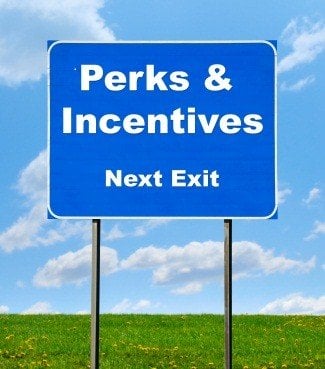
As a leader, how much do you use incentive as a motivational tool? When I was in high school and college, I worked several minimum wage sales jobs. The incentive given by the management team for making sales quota was consistently the same: a pizza party. The incentive rarely worked and often I saw quarter after quarter pass by with the team quota not being met and no pizza party to be had.
Finally, at another job, my manager introduced something new: she bought us a pizza party at the end of each quarter “just because”. And if we made our sales quota, we each got a $50.00 gift card to the store. For the first time in my young professional life, I worked for a company where my team consistently made our sales goal and we got the bonus of a pizza party!
Using incentives is a daily ritual of life. We do it with our family, pets, co-workers, clients and often people that pass through our lives for brief moments. Forgive me for my incredibly tardy reference, but I just read Freakonomics, a book and movie written by journalist, Stephen J. Dubner, and economist, Steven D. Levitt, where they set out to explore the “hidden side of everything”. The first chapter in the book is all about the idea of incentives. Where my mind wondered is, as a leader, how do you make a compelling incentive that is balanced?
Here are three things to consider when creating an incentive:
1) Know your Audience
The pizza party and the gift card were not the only reason we made our goal each month. My manager was an all-around good leader who understood who her employees were. These qualities about her actually made her incentives successful. She understood what motivated a 16-18 year old kid and, without a doubt, her incentive was the first one posed that was inviting enough for me to work towards.
2) Be Creative
We use incentives daily with each other, including using them to regulate our society. If it was always about money, it wouldn’t work. Take a moment to really think about who your employees are and what motivates them outside of the four walls of the office. Who knows? The incentive you use with your kid who enjoys being outdoors, after some modification, just might work with your outdoor-loving employees.
3) Find the Balance
Incentives invariably have weight to them because you are asking for something in return. The key is to make what you are asking for and what you’re willing to give balanced. Think to yourself, would it motivate me? If you’re being honest and the answer is “no”, it’s time to go back to the drawing board.
What are your thoughts? As a leader, what have you done to make incentives a powerful tool in your organization? As an employee, what makes an incentive worth the effort?
Tags: #Disincentives




